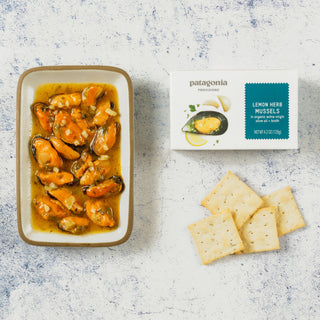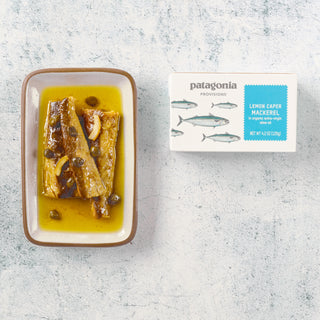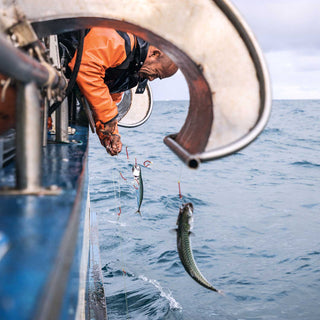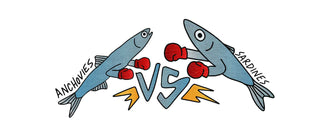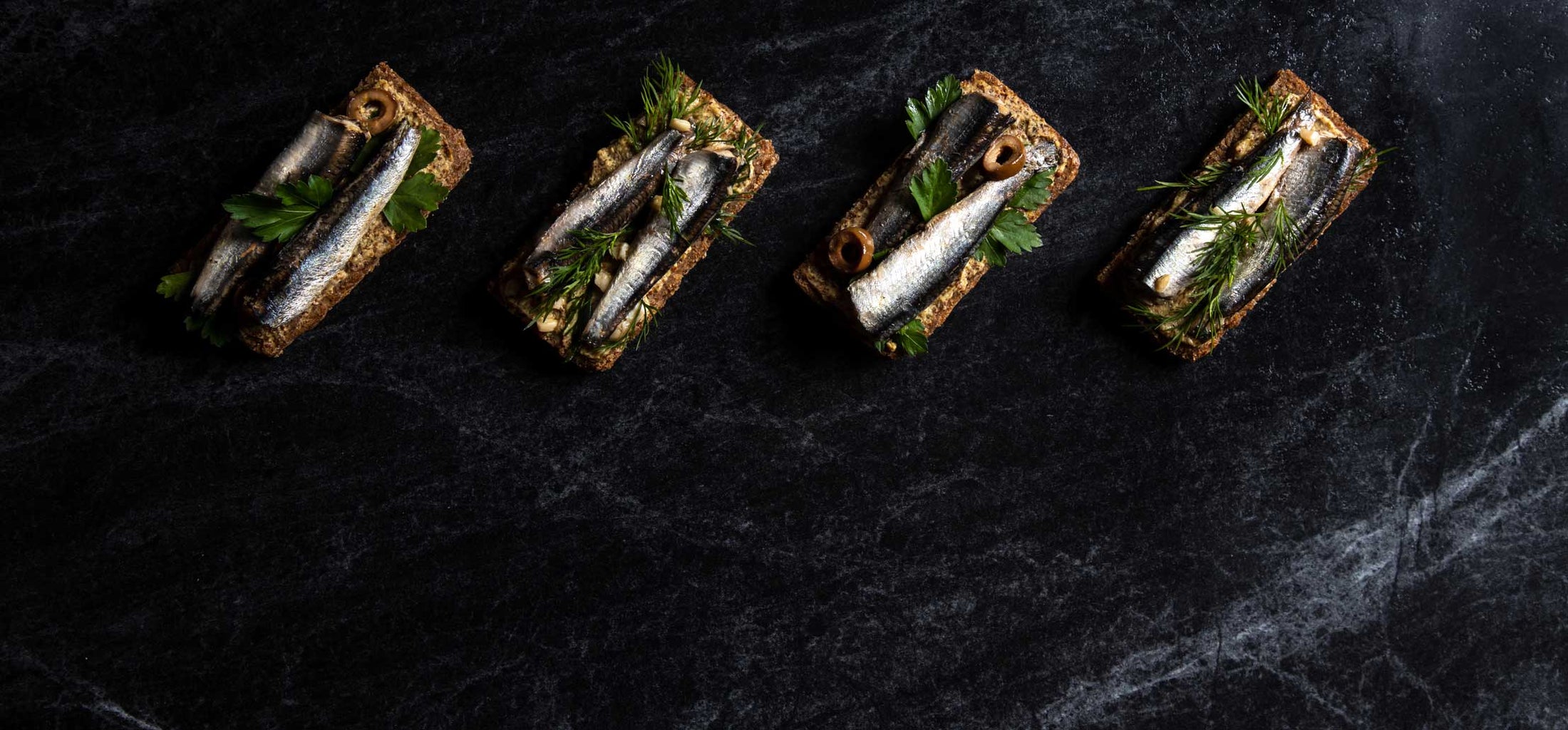Anchovies and sardines are both small fish with big flavor. They both typically come in cans, and those cans are probably sitting right next to one another at your local grocery store. So what’s the difference between these two fish, anyway? Here’s the blow-by-blow.
Sardines and Anchovies:
Don’t Mix ‘Em Up

Are anchovies and sardines the same fish? Not by 20,000 leagues. They’re entirely different species. Anchovies (Engraulis encrasicolus, if you wanted to know) are smaller than sardines (Sardina pilchardus)—4 to 10 inches long compared to 6 to 12. Anchovies are more likely to be salt cured, and the tiny dark-brown filets are sold canned or jarred in olive oil. Sardines are simply canned whole in olive oil and are lighter in color. Both are packed with beneficial nutrients. Anchovies have slightly more omega-3s, B vitamins and minerals than sardines, and are a little lower in fat and cholesterol.
How do Sardines Taste Compared to Anchovies?

Both sardines and anchovies are very perishable, so they’re most widely available canned. Canned sardines are dense, meaty and oily, with an assertive flavor. But they’re mild compared to salt-cured canned anchovy filets. The salt curing gives anchovies the pungent, punchy flavor that makes them so good in pizza toppings and Caesar salads. Anchovies canned without the salt cure, though, like our Spanish White Anchovies, are much milder—more like canned sardines, in fact.
When they’re fresh, both fish are delicious grilled or fried. Being oily, they crisp up really well, and any smoke or char balances out the strong flavors of the fish. Pickling or marinating these little fish works well too—as in boquerones en vinagre (anchovies in vinegar), a classic tapas in Spain, and sarde in saor (sweet-and-sour sardines), a standout Venetian dish.
Can You Substitute Anchovies for Sardines?

While we’re always culinary-curious, we wouldn’t recommend swapping in canned sardines for regular canned salt-cured anchovies on a Caesar salad. The salt cure gives anchovies a rich umami flavor and a meltingly soft texture. They’re best used sparingly, like a seasoning. Sardines aren’t salt cured—just canned in olive oil—so their flavor is more delicate and their texture firmer. Some anchovies are also canned, like our Spanish White Anchovies (on toast at left). You can absolutely swap in canned anchovies for sardines, although you will notice some subtle differences in flavor and texture. Give it a shot. You might like the results!
Cooking with Sardines & Anchovies

Delicious and healthy, both anchovies and sardines are worth adding to foods you already know how to make. Use salt-cured anchovies to boost the flavor of salad dressings, pasta sauces, and classic recipes like bagna cauda (a garlicky dip for vegetables). A filet or two is awesome mashed with butter and melted over fish or a grassfed ribeye. Canned sardines and canned anchovies are great used whole in pastas, like our Anchovy Linguine at left; in salads; and as a topping for toast or crostini. And they go great with hot sauce!
Oily Fish? That Means Healthy Fish!

Fatty fish, oily fish, call them what you will, they’re fish that store oils throughout their bodies, in contrast to whitefish, which have oil only in their livers. Salmon, tuna, mackerel, trout, sardines and anchovies are all prime examples of fatty fish. Not only do these rich fish taste great, they’re also packed to the gills with health benefits for humans—like high levels of omega-3 fatty acids, which are thought to benefit heart health and cognitive functioning, plus minerals and fat-soluble vitamins such as A, D and E. Also, sardines and anchovies, because of their shorter lifecycles and plankton diet, don’t accumulate the high levels of toxic heavy metals found in larger, apex-predator fish such as tuna.
Why Eat Lower on the Food Chain?

They say there’s plenty of fish in the sea, and while that’s no longer true, populations of anchovies and sardines are often abundant enough to withstand responsible harvest. The anchovy’s short lifespan and quick reproduction, along with strict management, make these little forage fish an important and fully renewable resource. What’s more, they swim in tightly packed schools, which means we can harvest them with very little bycatch. They’re a delicious alternative to overfished apex-predator fish like tuna and swordfish.
Spanish White Anchovies Offer The Best of Both Worlds

With all the health benefits of anchovies and the milder flavor of sardines, our Spanish White Anchovies might just be the best of both worlds. Packed with organic extra-virgin olive oil and Mediterranean spices, they’re good eaten straight from the can, and ramp up the flavor and nutrition of everyday food like sandwiches and salads. Plus, they come from well-managed fisheries off the coast of Cantabria, Spain. Salt-cured anchovies have their place, for sure, but cracking a can of anchovies or sardines opens the door to discovery.


